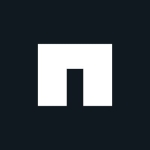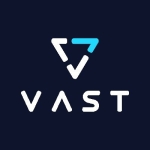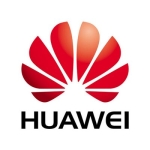What is our primary use case?
The primary use case for 3PAR would be security video recording, and the security video is used for multiple purposes. In the healthcare environment, it will be used for real-time locating, patient wandering, infant abduction, asset tracking, and staff duress.
Taking it to the next level of healthcare, in pharmaceuticals one has to keep track of the production and movement of products and retain those records for a period of two years, as per federal regulations. So now, we need multiple levels of storage: immediate storage, short-term, and long-term, with the data being kept for up to two years.
In these scenarios, 3PAR is an ideal solution, and we've had a lot of success because of its capabilities and the different types of storage. You can mix SSDs with running drives and slower drives for longer-term storage, minimizing your cost but maximizing your storage. And you can also evolve storage as needed. You can increase the amount of storage by adding in drives on the fly, as the need arises. 3PAR provides a very ideal solution for some of my customers.
How has it helped my organization?
It gives organizations a single point of storage and single point of backup. I would call it a "single repository" of all your data with a good archiving system. Those are the biggest benefits I see.
What is most valuable?
There are lots of valuable features, so it's difficult to isolate a few. Number one, being able to provision drives on demand, as opposed to populating a whole stack of drives and not using them. In the latter scenario, you are locking your money in, you don't get a return on investment. On the fly, you can build up your storage as needed, so that's a very good feature.
The second one is the mixture of drives. You can have SSD drives, fast disk drives, and slower drives, redundancy between drives, and hot-swappable drives on the SSDs, the faster hard drives, and the slower drives. This is a huge advantage as opposed to some other systems out there.
And of course, there are plugins and compatibility with the standard HPE hardware and it gives you a single panel to view the performance of your devices. From a single panel, I can see the performance of my service, my network, and my storage.
What needs improvement?
I would like to see them lower costs.
It would also help if they integrate current technologies, newer technologies, and more efficient technologies, as time progresses. For example, integrate the fourth level of NAND devices. I believe at the moment we have third-level NAND load-leveling in place. I know these devices are around the corner. In the not too distant future, they should add these types of drives in there. That will give us much faster access. Hopefully, in time, we will replace the spinning hard drives with SSDs only, and the different types of SSDs.
What do I think about the stability of the solution?
Hot-swappable drives and built-in redundancy gives stability to the solution.
What do I think about the scalability of the solution?
Being able to add drives on the fly gives the solution scalability.
Which solution did I use previously and why did I switch?
Most of my projects are large P3 (public-private partnership) projects, where we do design, build, and maintenance of a facility for up to 20 to 25 years. We then return it to the client with another 10 years of service. So, upfront, I have to decide what solutions to put in there that will give me the minimal refresh over a longer period of time. I have to weigh the pros and cons of how much I spend upfront and what my maintenance cost will be over time. That's where the 3PAR solution is a good solution for me. It gives me fewer refreshes over a period of time and yet, at the end of the contract, I can still return it to the client with another 10 years of service.
My clients rely on me for evaluating vendors. One of the things I do is take the data sheets from multiple suppliers, compare them, see what is the best fit for the client and then, of course, use my own judgment and experience with my other clients on the given product. Fortunately, 3PAR has been a good product, so, I have no hesitation in recommending it and moving forward with it.
How was the initial setup?
My involvement is primarily in the initial design of the system. I'm not involved with the actual setup. I will engage vendors recommended by HPE, or HPE-authorized vendors, to do the setup for me.
What other advice do I have?
Go out, do your research first on the different products that are out there and make the judgment for yourself. The information is out there.
Disclosure: My company has a business relationship with this vendor other than being a customer. Partner.











